Related Research Articles

A house is a building that functions as a home. They can range from simple dwellings such as rudimentary huts of nomadic tribes and the improvised shacks in shantytowns to complex, fixed structures of wood, masonry, concrete or other materials containing plumbing, ventilation, and electrical systems. Houses use a range of different roofing systems to keep precipitation such as rain from getting into the dwelling space. Houses may have doors or locks to secure the dwelling space and protect its inhabitants and contents from burglars or other trespassers. Most conventional modern houses in Western cultures will contain one or more bedrooms and bathrooms, a kitchen or cooking area, and a living room. A house may have a separate dining room, or the eating area may be integrated into another room. Some large houses in North America have a recreation room. In traditional agriculture-oriented societies, domestic animals such as chickens or larger livestock may share part of the house with humans.

A chimney is an architectural ventilation structure made of masonry, clay or metal that isolates hot toxic exhaust gases or smoke produced by a boiler, stove, furnace, incinerator or fireplace from human living areas. Chimneys are typically vertical, or as near as possible to vertical, to ensure that the gases flow smoothly, drawing air into the combustion in what is known as the stack, or chimney effect. The space inside a chimney is called the flue. Chimneys are adjacent to large industrial refineries, fossil fuel combustion facilities or part of buildings, steam locomotives and ships.
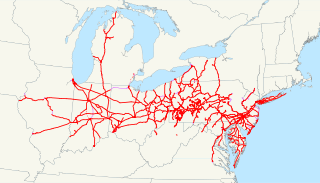
The Pennsylvania Railroad was an American Class I railroad that was established in 1846 and was headquartered in Philadelphia, Pennsylvania. It was so named because it was established in the Commonwealth of Pennsylvania.
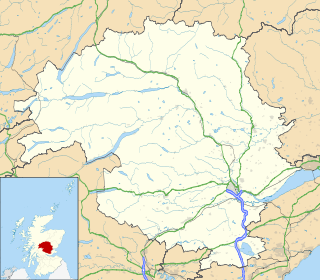
Pitlochry is a town in the county of Perthshire in Scotland, lying on the River Tummel. It is administered as part of the council area of Perth and Kinross, and has a population of 2,776, according to the 2011 census.

The British Empire Exhibition was a colonial exhibition held at Wembley Park, Wembley, England from 23 April 1924 to 31 October 1925.

John I. Thornycroft & Company Limited, usually known simply as Thornycroft was a British shipbuilding firm founded by John Isaac Thornycroft in Chiswick in 1866. It moved to Woolston, Southampton, in 1908, merging in 1966 with Vosper & Company to form one organisation called Vosper Thornycroft. From 2002 to 2010 the company acquired several international and US based defence and services companies, and changed name to the VT Group. In 2010 the company was absorbed by Babcock International who retained the UK and international operations, but sold the US based operations to the American Jordan Company, who took the name VT Group.
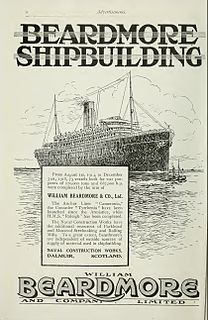
William Beardmore and Company was a British engineering and shipbuilding conglomerate based in Glasgow and the surrounding Clydeside area. It was active from 1886 to the mid-1930s and at its peak employed about 40,000 people. It was founded and owned by William Beardmore, later Lord Invernairn, after whom the Beardmore Glacier was named.
The Yorkshire Engine Company (YEC) was a small independent locomotive manufacturer in Sheffield, England. The company was formed in 1865 and produced locomotives and carried out general engineering work until 1965. They mainly built shunting engines for the British market, but also built main line engines for overseas customers.
The Bavarian Class E I steam locomotives operated by the Royal Bavarian State Railways encompassed four different variants of saturated steam, goods train locomotive with a 2-8-0 wheel arrangement.

Maschinenfabrik Esslingen (ME), was a German engineering firm that manufactured locomotives, tramways, railway wagons, roll-blocks, technical equipment for the railways,, bridges, steel structures, pumps and boilers.

The London and North Western Railway (LNWR) Prince of Wales Class was a class of express passenger locomotive. It was in effect, a superheated version of the Experiment Class 4-6-0.
Throughout its existence the London and North Western Railway re-used the numbers and names of withdrawn locomotives on new ones as they came out of Crewe Works. This resulted in each class of locomotives being allotted numbers virtually at random, with names that adhered to no discernible theme. By 1911 new locomotives were being produced at a much faster rate than old ones were being scrapped, and it became necessary to introduce a new set of names for Bowen Cooke’s 4-6-0 express engines which were beginning to enter service.
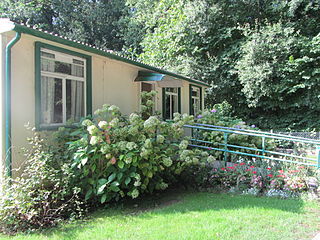
Prefabs were a major part of the delivery plan to address the United Kingdom's post–Second World War housing shortage. They were envisaged by war-time prime minister Winston Churchill in March 1944, and legally outlined in the Housing Act 1944.
The Ngatapa Branch was a secondary branch line railway 18,50 km long that for a short time formed part of the national rail network in Poverty Bay in the North Island of New Zealand. The Ngatapa branch diverged from the Moutohora branch line about 6 km from Gisborne and ran a further 12.5 km across the coastal flat to a terminus at Ngatapa.

The Golden Jubilee National Hospital is a hospital in Clydebank, near Glasgow, Scotland. It was opened in 1994 and is managed by a Special Health Board appointed by NHS Scotland.

Broadmeadow Locomotive Depot was a large locomotive depot consisting of two roundhouse buildings and associated facilities constructed by the New South Wales Government Railways adjacent to the marshalling yard on the Main Northern line at Broadmeadow. Construction of the locomotive depot at Broadmeadow commenced in 1923 to replace the existing crowded loco sheds at Woodville Junction at Hamilton, with the depot opening in March 1924. It was added to the New South Wales State Heritage Register on 2 April 1999.
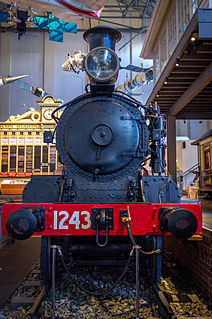
Locomotive 1243 is the oldest surviving locally built locomotive being one of the "Australian eight wheeler" locomotives built at the Atlas Engineering Company Works, Sydney for the expanding New South Wales Government Railways express passenger services.
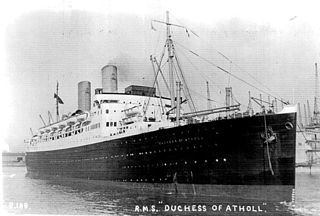
RMS Duchess of Atholl was a 20,019 GRT ocean liner of Canadian Pacific Steamships Ltd that sailed between Liverpool and Canada. William Beardmore and Company built her in Dalmuir, Dumbartonshire in 1928. For a month in 1928, Duchess of Atholl held the record for an eastbound crossing from Canada to Liverpool, at 6 days, 13 hours.

The South African Railways Dutton road-rail tractors of 1923 were road-rail steam tractors.

Rheidol, formerly named Treze de Maio and Talybont, was a 2-4-0 T steam locomotive built by W.G. Bagnall in Staffordshire, England, in 1896. Originally built to a gauge of 2 ft 5 1⁄2 in, it was ordered to work at a Brazilian sugar plantation, however the order was cancelled before it was exported. The locomotive was later regauged to work on the Plynlimon and Hafan Tramway in Wales before being regauged a second time and moving to the Vale of Rheidol Railway. It operated until 1924, when it was scrapped.
References
- ↑ "Atholl Steel Houses". www.west-dunbarton.gov.uk.
- ↑ Construction Industry Services report
| This architecture-related article is a stub. You can help Wikipedia by expanding it. |